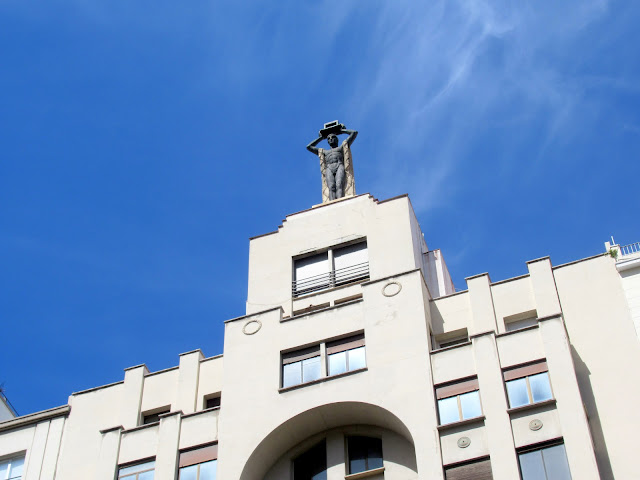The centre of Madrid is at once the hub of life and the high point of the barrio: it's lively and pretty and exciting. One of the things I noticed about Madrid is that the traffic does not interfere - there is traffic, but you tend not to notice it.
because we wanted to have a look at Chocolateria de San Gines which is the most famous venue for chocolate con churros, chocolate with deep-fried doughnuts, the ultimate street food: it's many things, but it's often breakfast, a hangover cure, and/or an early-hours cure for the munchies. It gets tourists during the day, but locals pack it out in their search for sustenance on their way home from a nightclub somewhere close to dawn.
and for their advertising they have adopted the girl from Velasquez' Las Meninas
They seem to have three shops in the same location, almost next to each other
and this one was the only one with no queue outside
and lots of free space inside.
Lots of places with flamenco dancing around
Most churches were closed most of the time and just opened for services and so was Iglesia de San Gines every time we tried to have a look inside
In one of the corners of the square is Hotel Europa and its wonderful outdoor cafe. We had lunch here a few times, as the food is good and it is a great place for people watching.
the cinema.
We started walking down Gran Via. It's a boulevard lined with towering belle-epoque facades; it climbs up through the centre of Madrid from Plaza de Espana then down to Calle de Alcala.
We started walking down Gran Via. It's a boulevard lined with towering belle-epoque facades; it climbs up through the centre of Madrid from Plaza de Espana then down to Calle de Alcala.
But, it has only existed since 1910, when it was bulldozed through a labyrinth of old streets. Fourteen streets disappeared off the map, as did 311 houses, including one where Goya had once lived. It may have destroyed whole barrios, but Gran Via is still considered one of the most successful examples of urban planning in central Madrid since the late 19th century. During the civil war, when Madrid was besieged by Franco's forces the boulevard became known as 'Howitzer Alley' due to the artillery shell that rained down upon it.











































No comments:
Post a Comment